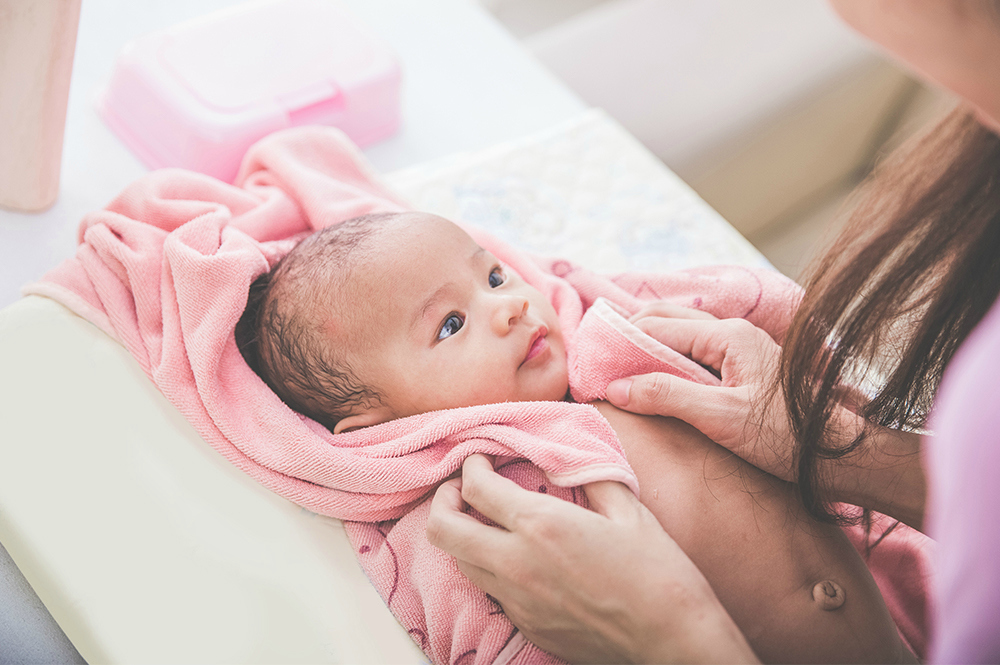From the Environmental Working Group
When a new child is coming to your family, choosing baby-friendly products for your home can feel overwhelming. Luckily, the Environmental Working Group can help you avoid worrisome chemicals and find safer versions of the products your growing family needs, while staying within your budget.
Skin care
From shampoo and body wash to baby oil and lotion, parents often slather skin care products on babies’ skin. What they may not realize is the chemicals from these products can make their way into children’s bodies. Many skin care products contain troubling ingredients, including ones linked to harm and many that have not been assessed for safety.
The good news: A growing number of companies, both newcomers to the market and established brands, are formulating new products to avoid questionable chemicals. You can search for products and ingredients with the EWG’s Skin Deep® cosmetics database.
Here are EWG’s top tips for finding safer skin care products for little ones:
- Avoid scented products.
- Skip baby powder.
- Choose zinc-based diaper creams.
Toys
Nearly every item a baby sees lands in his or her mouth. It’s the way little ones discover the world around them. That’s why it’s important the toys in your home don’t contain hormone-disrupting chemicals like BPA and phthalates, or harmful metals like lead that may be in paints added to toys. For example, the old rubber duck you might want to pass down to your child could leach phthalates.
Look for soft, washable cloth toys, or washable wooden toys, so you can get rid of bacteria and fungi easily, while also avoiding harmful chemicals.
Nursery necessities
Create a safer nursery by visiting EWG’s Healthy Living: Home Guide before you start shopping. When looking for a sleep mat or mattress, parents should consider the harmful chemicals they may contain.
For decades, children’s nap mats and many mattresses were made with foam loaded with chemical flame retardants. These toxic chemicals can also be added to children’s pajamas. Despite their name, independent researchers have found added flame retardants do very little – if anything – to protect against fire risks. Meanwhile, inhaling or swallowing dust with flame retardants chemicals has been linked to weight gain and trouble learning.
How to steer clear of flame retardants:
- Check labels on foam products. Foam furniture and mats made without chemical flame retardants will say so on the label. Those products are best for the kids’ health – and for the earth!
- Look for pajamas made of 100 percent cotton that are snug fitting. Children’s pajamas that are snug fitting do not require flame retardants and are labeled as such.
- Cleaning helps – vacuuming and dusting with a wet rag can prevent flame retardants and other harmful chemicals from building up in your home.
Food storage
Plastic containers and packaging are not good for the planet, and research has shown they are not good for kids’ health either. Experts recommend using glass baby bottles and storage sets, trying out stainless steel containers, and even considering plant-based dining sets and cutlery, such as those made from bamboo.
Life happens, so there will be moments when plastic is the most convenient option, but every little step helps. Be sure to use plastic-free containers when reheating or serving food.
Cleaning products
Harsh chemical cleaners aren’t just hard on our bodies – they may also run off into soil, rivers and streams to pollute drinking water sources. And a baby crawling near a kitchen sink cabinet stocked with toxic chemicals is bound to make new parents worry.
But you don’t need toxic chemicals to have a clean home. Many safe and effective cleaning and deodorizing products are readily available in your local grocery or home goods store.
Check out EWG’s database of cleaning products
, which rates more than 2,000 products based on their health hazards, environmental concerns and levels of ingredient disclosure.
